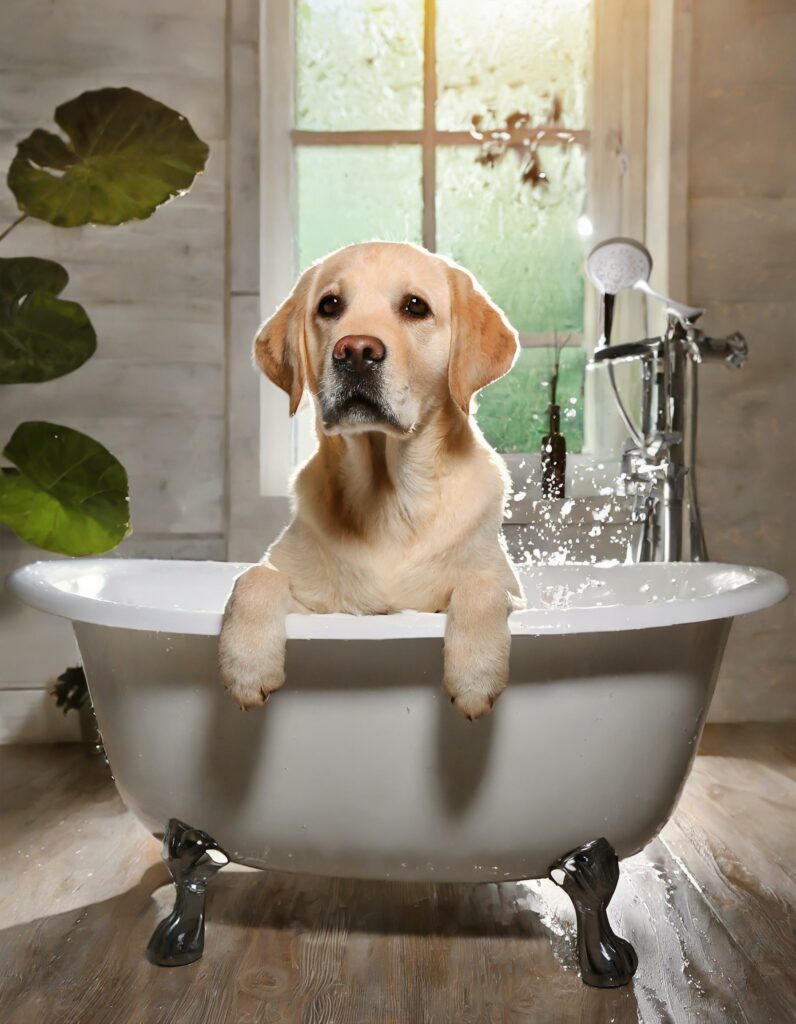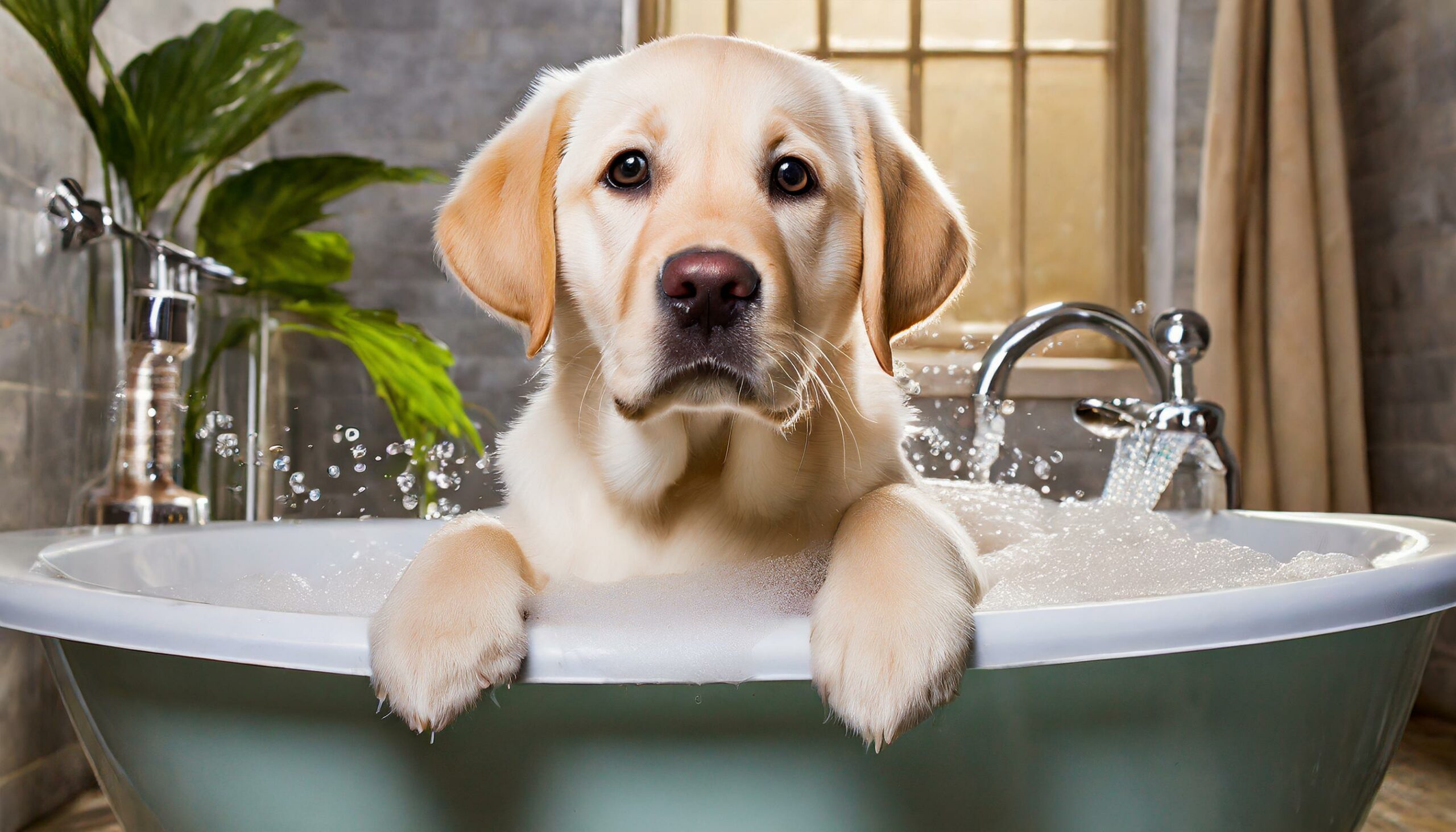Labrador Retrievers, commonly referred to as Labs, are not only one of the most popular dog breeds in the United States but also renowned for their endearing personality and high energy levels. Their love for play, coupled with their often adventurous spirit, means that Labs frequently find themselves in need of a good clean-up. Yet, the question of how often to bathe a Lab is not merely about dirt; it’s about maintaining their skin and coat health, ensuring comfort, and preserving their natural oils.
Understanding Labrador Retriever’s Coat
Labs are distinguished by their dense, double-layer coats. The outer layer is coarse and water-resistant, while the undercoat is soft and insulating. This unique combination is what historically made them excellent waterfowl retrieving dogs. However, it also means that their grooming needs are somewhat specialized. A Lab’s coat naturally repels water and dirt, but it also traps odors and debris. Thus, understanding this coat structure is crucial to determining an appropriate bathing schedule.
Factors Influencing Bathing Frequency
The ideal bathing frequency for a Lab can vary based on several factors:
- Activity Level: Active Labs who regularly participate in outdoor activities will inevitably get dirtier and may require more frequent baths.
- Environment and Exposure to Dirt: Dogs living in rural or suburban settings, where they have more opportunities to swim in lakes or roll in mud, will need more baths compared to their urban counterparts.
- Skin Conditions: Like people, dogs can suffer from allergies and skin irritations. Labs with sensitive skin might need special medicated shampoos and potentially more frequent or less frequent bathing depending on their condition.
General Bathing Guidelines for Labs
While the bathing frequency can vary, a good rule of thumb is to bathe your Lab roughly every two months. This timeline serves as a baseline, but always consider the specific needs of your pet. Frequent baths can strip the coat of its natural oils, leading to dry, itchy skin. Conversely, infrequent baths can cause buildup of oils, dirt, and odors.
Preparing to Bathe Your Lab
Proper preparation can make the bathing process smoother and more enjoyable for both you and your Lab:
- Gathering Supplies: You will need dog-specific shampoo, several towels, a brush, and possibly a hair dryer. Optionally, cotton balls can be used to prevent water from entering the ears.
- Choosing the Right Shampoo: The shampoo should match your dog’s skin type. For Labs with normal skin, a gentle dog shampoo is adequate. For those with dry or itchy skin, oatmeal-based or hypoallergenic shampoos might be better.
Step-by-Step Bathing Process
Here’s how to ensure a thorough and effective bath:

- Brush First: Brush your Lab thoroughly before getting them wet to remove loose fur and mats.
- Wet the Coat Properly: Use lukewarm water to wet your dog completely. Avoid hot water, as it can cause overheating and discomfort.
- Shampoo: Apply the dog shampoo evenly across the coat. Massage it in with your fingers to clean effectively without irritating the skin.
- Rinse Thoroughly: It’s vital to rinse all shampoo out of the coat to prevent irritation and buildup.
- Dry: Towel dry your dog as much as possible, then allow them to air dry in a warm, draft-free area. If using a blow dryer, set it on low heat and hold it at least a foot away.
Post-Bathing Care
Post-bath care is crucial in maintaining your Lab’s coat health:
- Brushing: After the coat has dried, brush your Lab to prevent tangles and to spread natural skin oils through the fur.
- Skin Inspection: Regularly check your dog’s skin for any signs of irritation or unusual dryness, which might indicate the need for a change in your bathing routine.
Signs You’re Bathing Your Lab Too Often
Over-bathing can lead to several problems, including dry, flaky skin, or a brittle coat. If your Lab’s skin seems unusually dry or if their fur becomes dull, consider spacing out the baths more.
Signs You’re Not Bathing Your Lab Enough
If your Lab starts to smell despite regular brushing, or if their coat looks oily or dirty, it’s probably time for a bath. Regular inspections will help you adjust the schedule according to your Lab’s specific needs.
Professional Grooming vs. At-Home Bathing
While most bathing needs can be managed at home, professional groomers offer benefits, especially for coat trimming, nail clipping, and thorough ear cleaning, which might be challenging to perform at home.
Tips for Keeping Your Lab Clean Between Baths

- Regular Brushing: Brushing several times a week helps remove dirt and loose fur and keep the skin healthy.
- Spot Cleaning: For minor messes, use dog wipes or a damp towel to clean up without a full bath.
- Diet and Supplements: A healthy diet can enhance coat health, potentially reducing odors and improving overall cleanliness.
Common Mistakes in Bathing Labs
Avoid using human shampoo, which can disrupt the pH balance of your dog’s skin. Also, ensure the water temperature is neither too hot nor too cold, as extreme temperatures can be uncomfortable and harmful.
FAQs About Bathing Labs
Is it okay to bathe my Lab every week?
Unless advised by a vet for specific skin issues, weekly baths are not recommended as they can strip the coat of its natural oils.
What type of shampoo is best for a Labrador?
A mild, dog-specific shampoo that suits your dog’s skin type is ideal. For Labs with sensitive skin, hypoallergenic or oatmeal shampoos are often recommended.
How can I dry my Lab quickly after a bath?
Towel dry vigorously but gently, and if you use a hair dryer, keep it on a low, cool setting. Make sure the dog is in a warm, draft-free area until completely dry.
Can bathing affect my Lab’s health?
Proper bathing can improve your Lab’s health by preventing skin infections and maintaining coat quality. However, over-bathing can cause dry skin and irritation.
What are the signs my Lab might be allergic to their shampoo?
Look for signs of discomfort during or after bathing, such as scratching, redness, or hives. If these symptoms appear, consult your veterinarian and consider switching to a different shampoo.
Conclusion
Maintaining a balance in bathing your Labrador Retriever is crucial for their health and happiness. By understanding their specific needs and adjusting your grooming habits accordingly, you can ensure that your Lab remains clean, healthy, and vibrant.
